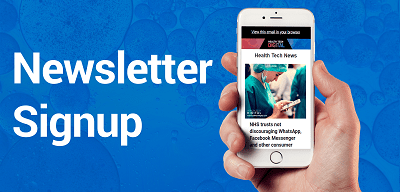
Tech is already playing a pivotal role in helping NHS Trusts to address its everyday challenges. Read on to explore the trend of end-to-end digital transformation and the benefits it can ultimately deliver.
NHS Trusts across the country face a daily burden of inefficient data handling. This slows down the rate and quality of data output, impacting a patient’s access to services like hospital appointments.
By revolutionising processes end-to-end – synchronising and integrating multiple systems from the front, through the middle, to the back end – digital transformation optimises efficiency for public sector organisations. Utilising multiple technologies – such as automation, mobile apps, eForms, workflow and APIs – front-end interfaces can be synchronised with back-office systems enabling public sector organisations to unlock more streamlined ways of working. The results include energy and time savings for staff, boosted effectiveness, and reduced cost.
Technologies such as RPA, mobile apps, eForms, APIs, workflow and web services are proving revolutionary when correctly combined and applied. Fostering better data accuracy, security, and efficiency unlocks a better user experience, saves costs, and reduces carbon emissions.
Freeing up previously inaccessible data reveals further possibilities to provide more efficient workflow management and deliver better services to the public. The end-to-end digital transformation of a single process paves the way for wider systemic change.
However, realising these opportunities proves another challenge – both for organisations themselves and the experts supporting them.
Among the biggest barriers to digital transformation are:
- Knowledge gaps. Limitations on in-house skills curtail the true capabilities of digital tech.
- Limitations on time and resources. In some cases, internal tech teams have the knowledge and skills to enact digitisation, they simply lack the time.
- The sheer volume and variation of systems already in place. Public healthcare bodies cater to a large number of users and handle multiple data sources. Their systems often operate across a combination of platforms – from paper to cloud, to internal IT back systems.
- Attitudinal barriers. Public healthcare teams may consider themselves experts in the systems they are accustomed to, and therefore not spot inefficiencies. It may not have occurred to them that automation and front-end technologies could ease the pressure of their workload and free up their time to complete more rewarding tasks.
In recognition of these challenges, it is advised that any public sector body adopt the following criteria for end-to-end project success:
- Listen to the opinions of the end user
Successful digital transformation relies on experts navigating existing systems as their users see them. In a healthcare setting, this could be anyone from a nurse, to a doctor, to an administrative staff member. This enables the team to deliver an end product that is optimised to the specific patient’s needs. Ultimately, any positive outcome rests on the strength of cooperation between both parties.
From my experience working on NDL’s public sector projects, I have observed a lot of comfort in “the way things have always been done”. Outdated ideas about information governance sometimes impede digital progress, but it is important to handle them with care and understanding.
When information is considered ‘safe’ on paper in a physical filing cabinet, the introduction of digital tools can seem uncertain and complex. The experts involved must be respectful and sensitive to the anxieties of public sector teams when educating them on the security of digital systems if they are to be accepted.
Successful digital transformation is a collaborative partnership.
- Make change accessible
While digital transformation will always benefit from the help of technical experts and consultants, upskilling internal staff makes future evolution more manageable and less disruptive.
Accessibility is essential – if healthcare organisations are not self-sufficient in their new digital process, there is less chance that it will lead to opportunities for further evolution.
One way this can be achieved is the application of low-code platforms, removing the need for in-depth coding knowledge and allowing organisations to take control of digitalisation.
At NDL, we approach end-to-end transformation as a two-way conversation. Digitalisation isn’t a case of simply selling a tech product, but understanding our customers’ objectives and how to productively address and support them.
Our bespoke platform builds on connecting existing platforms on a case-by-case basis, granting users a sense of familiarity. We favour a ‘technology agnostic’ approach that does not rely on the expertise of staff but instead aims to close gaps between processes and users.
- Build a long-term partnership
The nature of end-to-end digital transformation is iterative and agile. Once a particular development addresses a need, the need itself alters, the goalposts move, and there is a new stage of transformation to strive for. This means there will always be space for public sector organisations to further streamline their operations.
Through its customer need-driven approach, NDL often organically generates flexible products that help multiple organisations. Our ongoing discovery of new applications for existing tech continues to benefit our public sector clients – fostering valuable long-term relationships.
Now that the healthcare sector is realising the potential of digital transformation, I believe data sharing between organisations will become more fluid. However, there will always be different standards of operating across different bodies, and one single system will never efficiently cater to this variation.
For this reason, there will always be room for more and better digital transformation processes. The concept of end-to-end is always extending, as the ‘end’ destination remains dynamic.
The key to digital end-to-end transformation is allowing the ambition of the process to evolve. Improvement opens up the opportunity for more, and tech companies must make it their mission to help the public sector to embrace dynamic innovation.
For further information and support, please visit the NDL website: https://www.ndl.co.uk
By Gareth Handley, Head of Product Development at NDL










